Anyone with an interest in snakes will have found themselves asking, “How long do snakes live?“
While there’s no one-size-fits-all answer to this question, we can make some educated generalizations.
Join us as we delve into the various factors that affect a snake’s life expectancy.
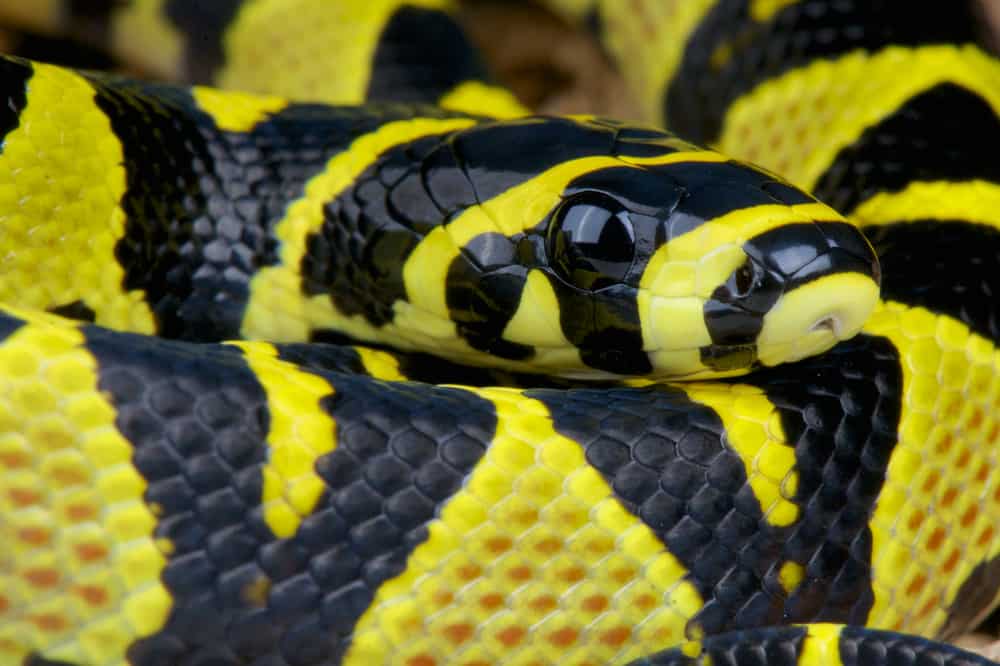
In This Article
In Short
- Not all snakes live for the same amount of time
- The oldest snake on record is over 60 years old
- On average, snakes live for 15-20 years in captivity
- Wild snakes have shorter lifespans than pet snakes
- Food availability, temperature conditions, and other factors affect snake lifespans
Snake Lifespans in the Wild
When answering the question, “How long do snakes live,” it’s better to split the question in two.
The relevant questions are, “How long do snakes live in the wild?” and “How long do snakes live in captivity?“
As we consider the various aspects of a snake’s life expectancy, we’ll look at a few different species.
We’ll also discuss the difference in the lifespans of pet snakes like Ball Pythons and those same snake species in the wild.
Let’s start with the factors that affect a snake’s life expectancy in the wild.
Predator Pressure
Probably the most apparent difference between snakes in natural habitats and pet snakes is predator pressure.
Unlike snakes in captivity, wild animals might get eaten. Snakes are particularly vulnerable when:
- They shed
- The temperature drops
- They’re battling with their health
Eagles, other snakes, mongooses, weasels, and many other animals have no problem feeding on snakes.
Many snakes in natural habitats die young from predator pressure. It’s rare for a snake to live for ten years in the wild.
Food Scarcity
On the flip side, snakes are predators and require a certain amount of food to live a long and healthy life.
Many different factors affect a snake’s ability to catch enough food. These include:
- Competition from other predators.
- Drought and famine, which affect prey populations.
- Low temperatures that prevent the snake from moving quickly.
Health
Wild snakes are far more susceptible to different things that affect their health.
Among other things, these snakes need to deal with:
- Viruses
- Fungal infections
- Ectoparasites like ticks and mites
- Endoparasites like worms and Coccidia
- Diseases that are well-managed in captivity
These things affect a snake’s ability to stay healthy and the quality of its life.
Exposure to Human Beings
Wild snakes also have to contend with ‘wild’ populations of humans. People in towns and villages are often NOT on good terms with the local snake population.
Many snakes have come to a grizzly end thanks to the spade, hoe, or ax of an overambitious farmer.
The most common questions on the internet include “How long do snakes live without a head,” and “How long do snakes live after being cut in half?”
Sadly, a wild snake that lives close to a human community is more likely to die than one in a wholly natural habitat.
What Impacts a Snake’s Longevity?
Many different factors affect a snake’s lifespan, which is why it’s impossible to provide an accurate average lifespan for snakes.
Whether it’s a pet snake or lives in a natural habitat, these factors affect how long it will live:
- Stressors – Stress is a killer, literally. Snakes that regularly undergo stress (like almost getting eaten) are more susceptible to disease and likely die younger.
- Health Conditions – As with any animal, good health is vital for a long lifespan. Snakes that get sick regularly, or have a weak immune system, won’t live as long.
- The Type of Snake – each species of snake has a different lifespan. Species like the Reticulated Python or Ball Python tend to live much longer than Corn or Kingsnakes.
- Regularity of Feeding – Every type of snake needs to eat pretty regularly to survive. If the snake doesn’t have resources for feeding regularly, it can impact their lifespans.
- Quality of Natural Habitat/Enclosure – If a snake lives in an environment that meets all of its needs (accurate temperatures, humidity, substrate, etc.), it will live much longer.
How Long Do Black Snakes Live?
There’s a long-standing belief that black snakes are different from other snake colors.
This idea is rooted mainly in superstition and dates back to times when people used these snakes as ingredients in potions and spells.
The reality of the matter is that there are two different types of black snakes.
Some species of snake can be naturally black, including:
- The Cottonmouth (Agkistrodon piscivorus)
- The Black Swamp Snake (Seminatrix pygaea)
- The Ring-Necked Snake (Diadophis punctatus)
- The Eastern Rat Snake (Pantherophis alleghaniensis)
Each of these snakes has a different average lifespan.
The Eastern Rat Snake reaches between 10 and 15 years in the wild, while the Cottonmouth may live up to 10 years in exceptional cases.
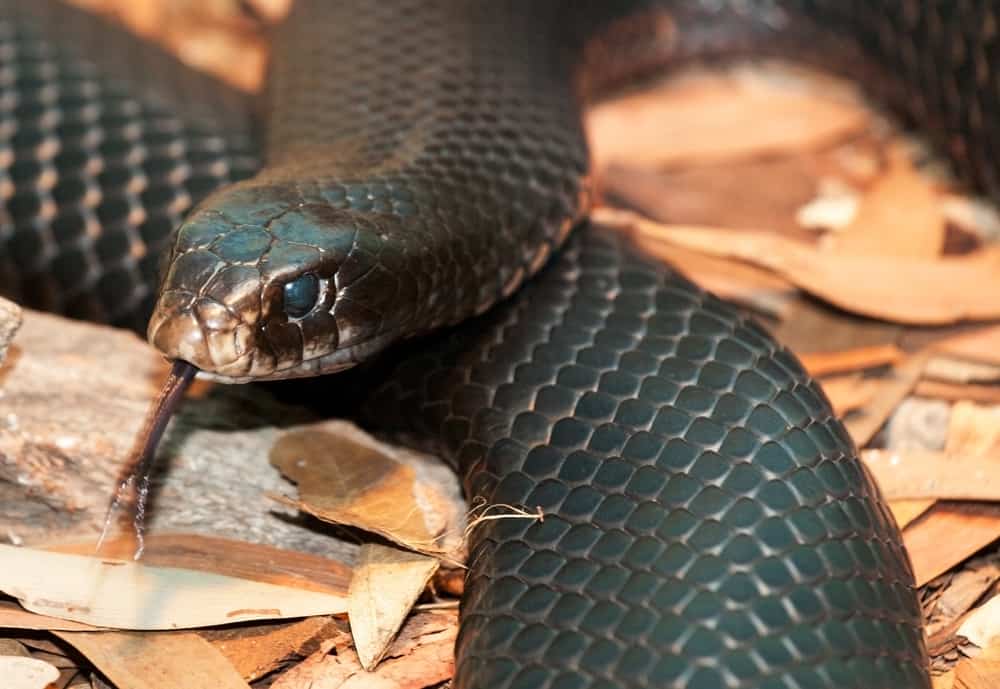
The other type of black snake is a melanistic snake.
In an albino snake, the animal produces no melanin (the pigment that gives color). In melanistic snakes, the animal produces too much melanin.
These types of snakes are unlikely to survive in the wild since the usual camouflage of their kind is ineffective.
Black snakes stand out where brown ones blend in, making them easy targets for predators, so most die young.
How Long Do Black Snakes Live in Captivity?
How long do black snakes live in captivity?
Black snakes that live in captivity have a better chance of surviving than in the wild.
Melanistic snakes are a sought-after commodity in the pet trade, and many breeders focus on them.
This type of pet snake is often worth hundreds of dollars more than its standard counterparts.
Whether it’s a black species or a snake with melanism, it will have a longer life in captivity.
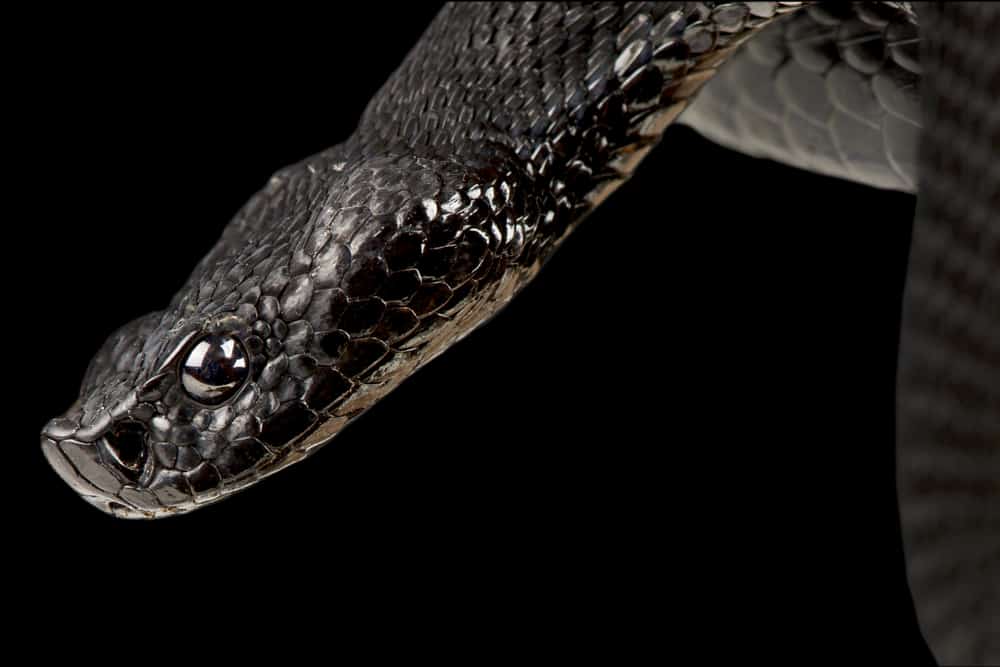
Most of these snakes will have an average lifespan of around 15 years.
In the case of a Ball Python (check out the different morphs), they may live for anywhere between 20 and 30 years if well cared for.
Among other genetic oddities are leucistic snakes, which have coloration but lack the genes to express those colors. You can read more about those here.
How Long Do Pythons Live?
Pythons are some of the most resilient wild snakes, mainly because of their size.
While most species will still have a longer life in captivity, wild specimens can live long lives.
Let’s take a look at the wild lifespans of some popular pet pythons:
- Ball Python – around 10 years
- Burmese Python – between 20 years and 25 years
- Reticulated Python – between 20 years and 23 years
- Green Tree Python – around 15 years
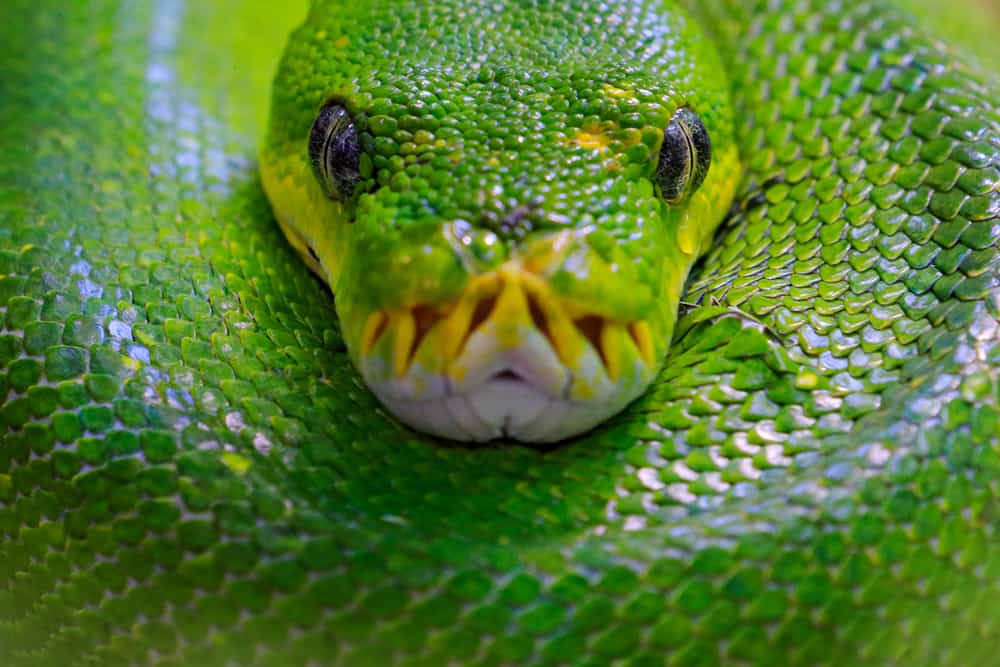
While there’s no hard and fast rule for python ages, these are some of the most long-lived snake species in the wild.
How Long Do Pythons Live in Captivity?
The average pet snake lives for around 15 years, though they may not get that old in the hands of a novice keeper.
Pythons, like Reticulated and Ball Pythons, tend to be some of the longer-lived snakes. These behemoths reach gargantuan lengths and can live for nearly 30 years.
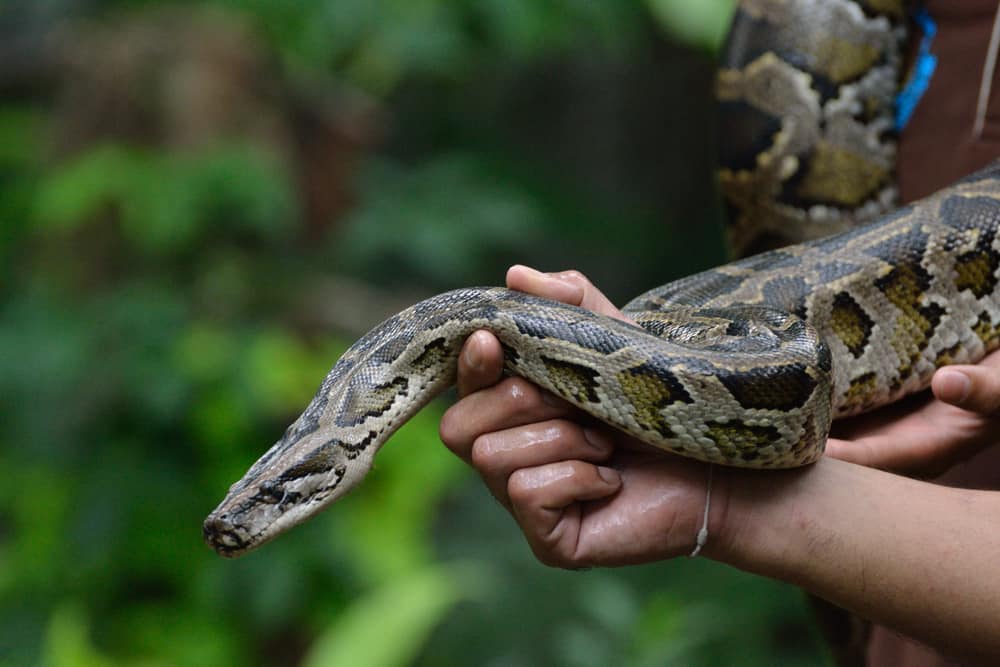
Let’s look at the average lifespan in captivity for popular pet python species:
- Ball Python – between 20 years and 30 years
- Burmese Python – between 20 years and 28 years
- Reticulated Python – between 20 years and 25 years
- Green Tree Python – around 20 years
How Long Do Pet Snakes Live?
There’s a fair difference between the question, “How long do pet snakes live?” and the question “How long could pet snakes live?“
Most pet snakes live much longer lives than their wild counterparts. Many of those pets could live even longer if they received the optimal care and attention.
Much of a snake’s lifespan in captivity comes down to the owner and the animal’s level of care.
To demonstrate this fact, let’s look at the average lifespan of some pet snakes and their potential lifespan in captivity:
- Kingsnakes have an average lifespan of 15 years in captivity but can live for up to 23 years.
- Corn snakes often live for only six or seven years in captivity but can reach between 18 and 25 years.
- Ball Pythons have an average lifespan of between 18 and 20 years in captivity, but can reach ages of between 25 and 30 years.
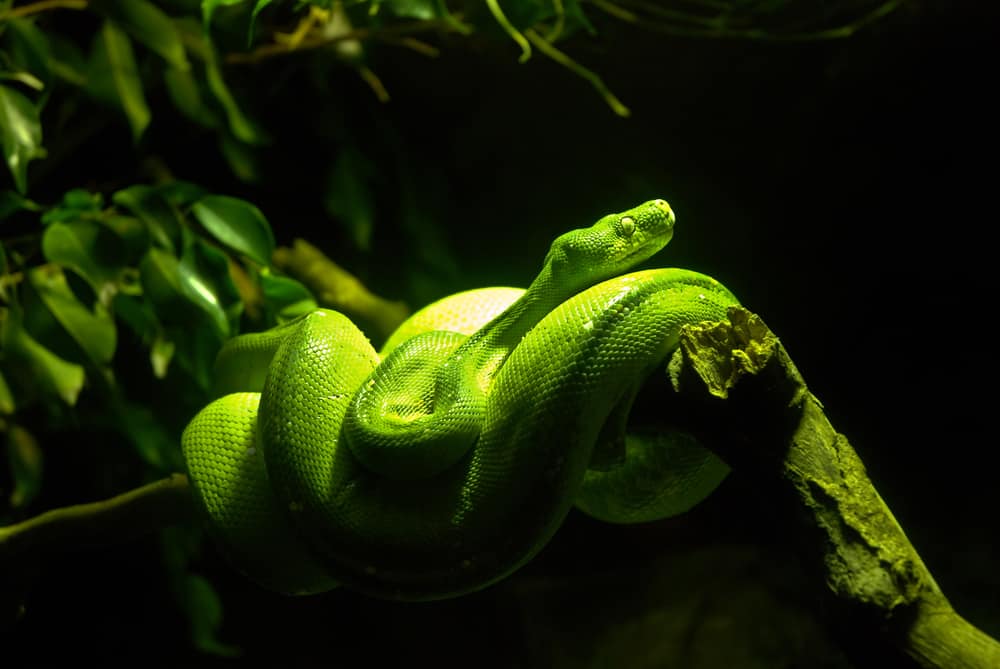
While it’s impossible to provide a general average lifespan for all species of snakes in captivity, a pet snake often lives for between six and 15 years.
Unfortunately, that’s up to 18 years less than some of their potential lifespans.
A responsible owner can extend the lifespan of their pet by several years.
Keeping the enclosure clean, the snake well-fed, and other similar actions make a huge difference.
You also need to ensure that the temperature and humidity are right during a shed and other crucial events.
How Long Do Corn Snakes Live?
How long do Corn Snakes live in the wild?
In the wild, corn snakes do not live nearly as long as their pet counterparts.
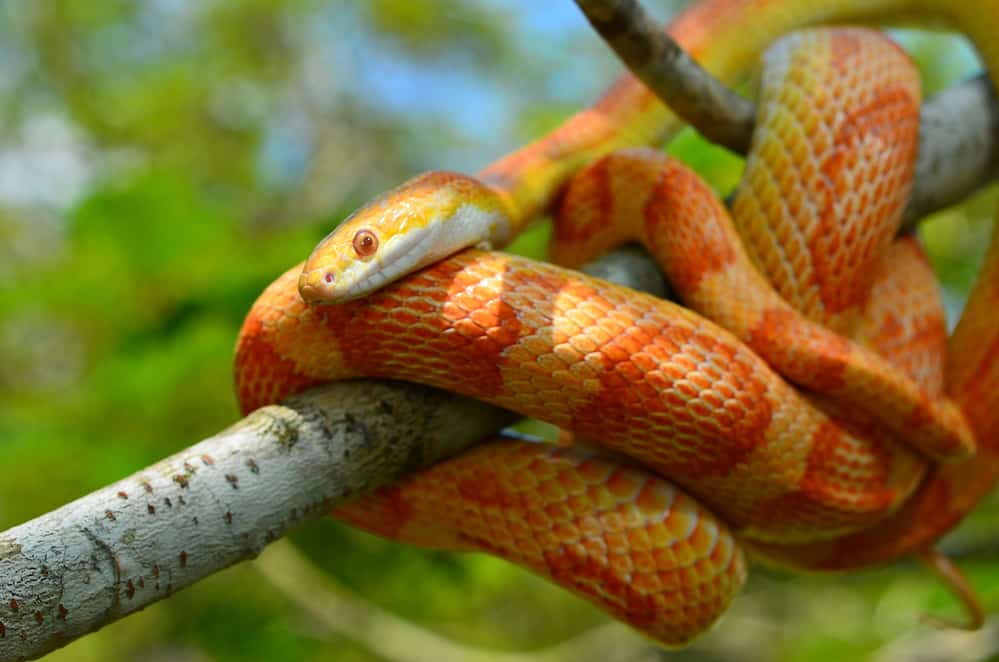
Due to many of the factors mentioned above, the average age for a wild corn snake is between three and six years old.
In rare instances, a wild corn snake may live for ten years or more.
How Long Do Corn Snakes Live in Captivity?
We often get the question, “How long do corn snakes live in captivity?”
In captivity, Corn Snakes can be long-lived. It’s not unusual for these snakes to have a lifespan of 20 years or more in captivity.
The average lifespan for these pet snakes is around 15 years.
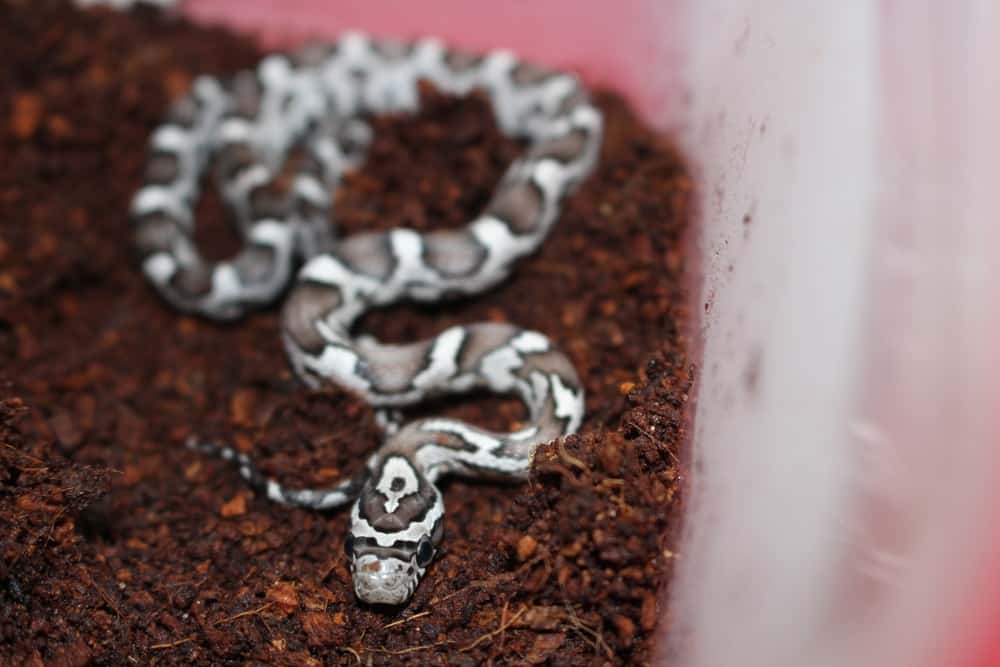
How long your particular pet snake will survive depends on the quality of their genetics, as well as how well you care for them.
If you have a snake with strong bloodlines and meet all its needs, it could become an ol’ timer.
How Long Do Snakes Live For?
How long do snakes live for? When discussing this, we need to consider whether the snake lives in captivity or its natural habitat.
Kinking is one genetic health condition that refers to when a snake’s spine is bent at strange angles.
Depending on exactly how the kinking manifests itself, it can adversely affect a snake’s quality of life and lifespan. Hence why certain morphs—like the Bumblebee Ball Python—are not considered ethical to breed.
If you’re curious, you can learn more about skeletal systems in snakes and how they work in our guide.
Pet Snakes
The actions of a capable caregiver can extend a snake’s lifespan in captivity. Conversely, a careless or untrained keeper can shorten the lifespan of that same species in captivity.
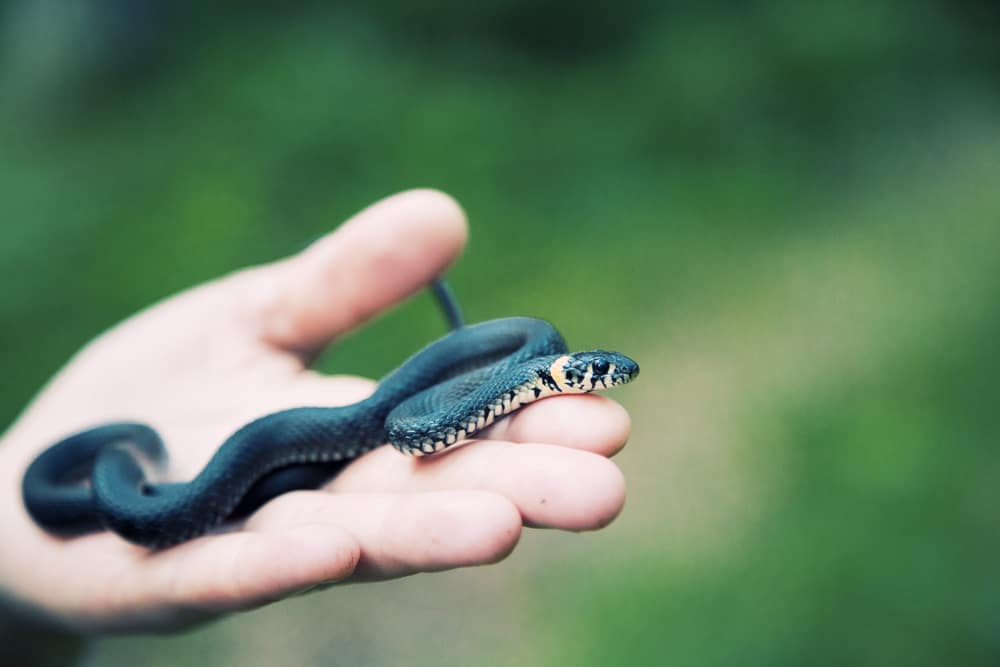
Overall, captive snakes tend to live longer lives. This difference takes place because:
- Captive snakes don’t need to contend with predators
- The snake doesn’t face competition for natural resources
- The keeper keeps the enclosure clear of external parasites
- A human adjusts the temperature and humidity to keep it optimal
- The snake isn’t as vulnerable to attacks and drying out during a skin shed
- A responsible owner medicates the snake to keep it free of disease, infections, and internal parasites
- The snake’s keeper ensures it has something to eat when necessary (i.e., rather than periods of gorging and times of lack, the snake consistently gets enough to eat without allowing it to become obese)
The average lifespan in captivity for snakes like kingsnakes and Ball Pythons is between seven and 15 years. Sadly, this is as little as half of some species’ possible lifespans.
Wild Snakes
As we mentioned earlier in this article, many different factors affect the lifespan of wild snakes.
The factors that come into play include:
- The snake’s ability to catch enough food
- If the snake can find a good place to shed
- How much predator pressure the snake faces
- How much water the species needs to survive
- How close the animal is to human communities
- How parasite-ridden the animal’s prey items are
- How well the snake avoids picking up external parasites
- The temperature and humidity fluctuations in the snake’s habitat
- How resistant the animal is to the viruses, bacteria, and fungal infections in the area
- If the snake has sufficient camouflage to remain hidden (leucistic, melanistic, and albino snakes rarely live long in the wild)
All of these things, and many others, mean that a wild snake has a shorter lifespan.
Under ideal natural conditions, some of the shorter-lived snakes may become around ten years old.
Like the Reticulated Python, some types regularly reach ages of 15-20 years in the wild.
For most of the smaller species, a lifespan of around seven years isn’t unusual.
How Long Do Snakes Live Without Food?
Many people think that a snake can live without food. As with the concepts about black snakes having immortality, this idea was born in an age of superstition.
Snakes can go for quite some time without having to eat.
Under certain conditions, like when the temperatures drop low, snakes will go into a state of hibernation. By doing so, they eliminate the need to eat.
Garter snakes gather in large groups every year and hibernate together till the following spring.
Likewise, when it gets too hot, a snake might go into a state of torpor. They slow life down to a near halt and go into a deep sleep until it cools down again.
Many other snakes can live for extended periods without food when food is scarce or when they undergo health dilemmas.
Ball Pythons can go for as long as six months without food, while some other snake species can live for two years without having to eat.
While scientists haven’t done sufficient studies to prove it, many suspect that these times without food affect how long snakes live overall.
Please note: these numbers are the result of studies in the wild. You should never allow your pet snake to go months without food.
You can still learn more about snakes’ eating habits with our guide to what snakes eat.
How Long Do Snakes Live Without Water?
As with the lifespan of a snake, or its ability to survive without food, it isn’t easy to provide a general answer to this question.
Some types of snakes, like water snakes, tend to live in habitats with plenty of fresh water.
As a result, these species have never needed to adapt to living without water and can last a few days at most.
Other species naturally come from more diverse environments—a snake like a Ball Python can live for up to 12 days without water.
A snake that comes from a desert area, like adders and some rattlesnakes, can go almost indefinitely without water since they get enough moisture from their food.
If those same species have access to neither food nor water, they’re unlikely to last long.
On average, a snake can usually go for between two weeks and a month without water.
How Long Did the Oldest Snake Live?
How old was the oldest snake on record?
This is a somewhat controversial question, which we’ll answer in segments.
According to Guinness World Records, the oldest living pet snake is a Green Anaconda from South Africa. Her name is Annie, and she’s 37 years old.
Annie weighs in at more than 40kg and is over 13 feet long.
Guinness claims a record for the oldest pet snake too.
Ben, the Columbian Rainbow Boa, lived for 42 years in captivity before he died. He finally passed away in 2016.
Outside of the official Guinness World Record, there’s another much older snake.
Scientists believe a snake at the Saint Louis Zoo in Missouri to be a whopping 62 years old! She’s a female Ball Python, donated to the zoo in 1961.
What Age Do Snakes Reach Maturity?
Many different factors affect the age at which snakes reach sexual maturity.
Among some of the different considerations which impact this milestone are:
- Feeding – Snakes that get a balanced diet and sufficient nutrients are likely to mature sooner than animals with a deficient diet.
- Captivity – Pet snakes typically mature faster than wild animals.
- Snake Species – Not every species of snake will mature equally fast. A Ball Python may mature faster than a corn snake, or vice versa.
- Overall Life Expectancy – Snakes that live longer may mature later than short-lived snake species.
It’s almost impossible to determine an overall average if you bear all these factors in mind, but we can make a rough estimate.
The accepted average age of sexual maturity for most snake species is between two and three years.
Whether you wanted to know about the life expectancy of a Ball Python or whether your pet snake is the oldest, we hope you enjoyed this article.
We have many snake-related posts, like this one about caring for Sunbeam Snakes. You may also enjoy our articles about caring for corn snakes and Ball Pythons.
As always, if you have any comments, questions, or ideas, please drop a comment below.
